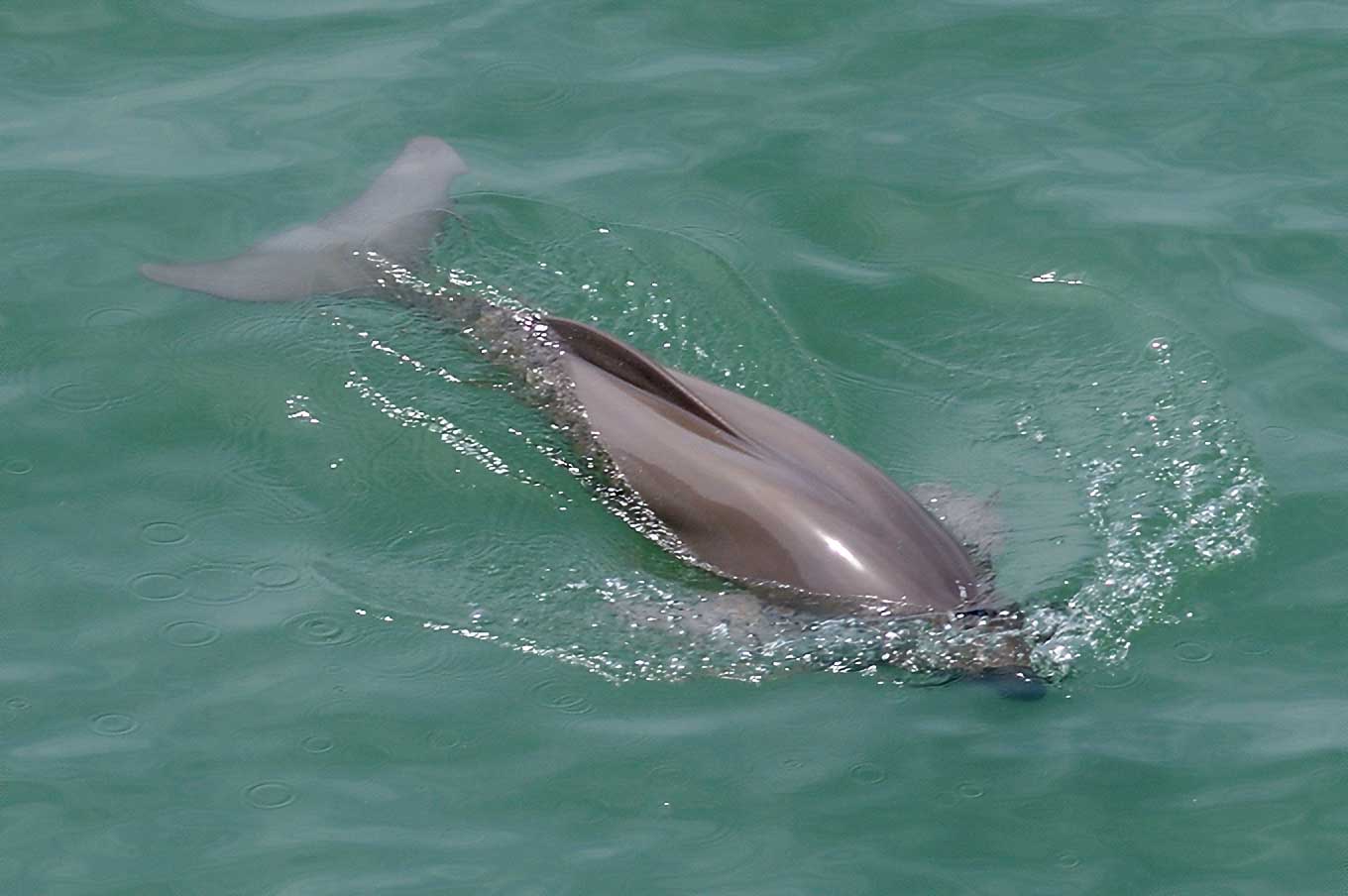
Korea
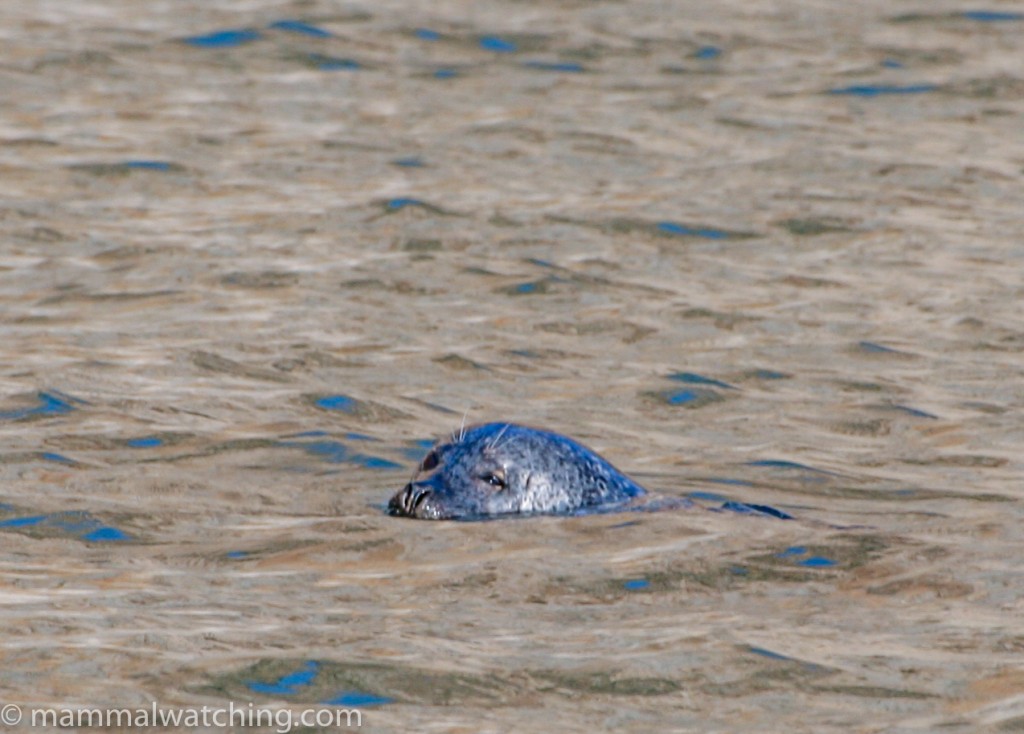
Largha (Spotted) Seal, Phoca largha
Korea is not famous for its wildlife watching. So when I had to visit for work in September 2006 and had a free weekend my excitement was containable. And when I spoke to a couple of Korean friends I pretty much gave up on the idea of trying to see any wildlife: they painted a bleak picture of a landscape devoid of anything mammalian and were apologetic about their country’s environment.
I was very pleasantly surprised because it wasn’t anything like that bad: I saw a lot of forested hills near the major highways that looked quite promising and that was in the most populated part of the country.
I returned to Korea in February and October 2007 and again in October 2009.
Getting Around
Although some people speak good English, most don’t, and it would be quite hard if you don’t speak Korean to communicate with taxi drivers and so on. I managed to get a Goodwill Guide, courtesy of the Korean National Tourist Office. This is a free service the tourist office provides whereby they match tourists up with volunteer guides who will accompany you so long as their expenses are covered. I remain in touch 10 years on with my guide, Mr Kim Doo Chull: he was excellent, couldn’t do enough to help me and loved beer as much as I do.
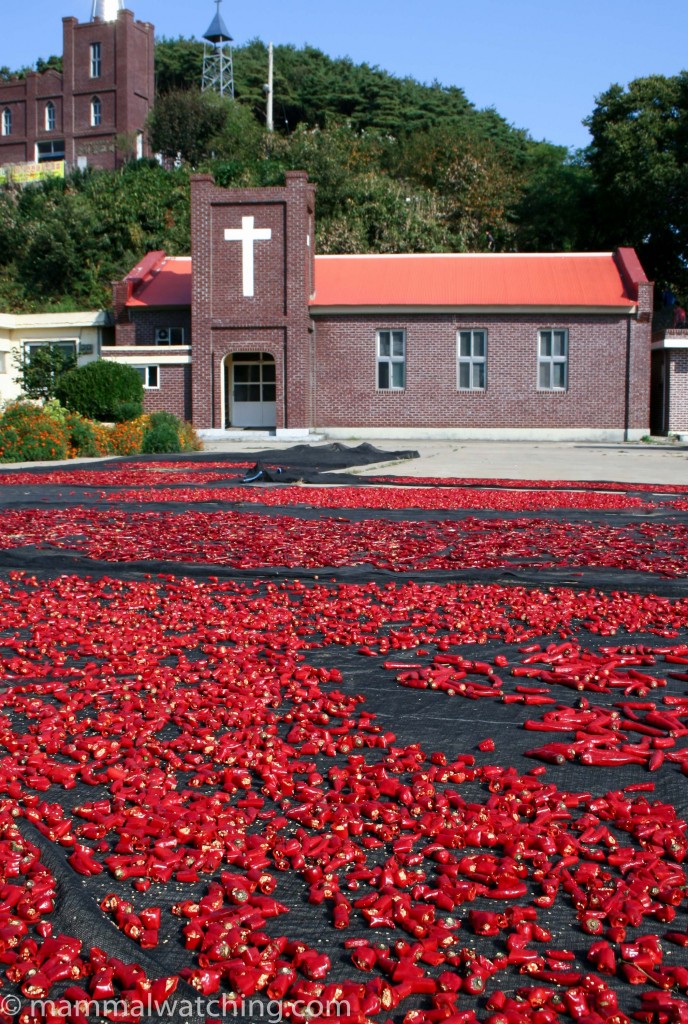
Church and chilies, Baeng Ryong Do
Korea was something of a culture shock. The people were nearly all extremely friendly and the service in shops and hotels was spectacularly good (also a culture shock after Paris!). The food was interesting and tasty, though there is only so much fermented cabbage and fish I can eat, especially for breakfast.
Baeng Ryong Do Island
For my first visit a quick Internet search suggested that a few hundred Largha Seals spend their summers near the island of Baeng Ryong Do (this is spelled in various ways in English but pronounced something like “bang re-yong doe”). The island is within tank shell range of North Korea and it is a four hour trip by very fast (35 knots) catamaran ferry from Incheon. Several ferries travel there early each morning, from 7 – 8 a.m. returning again about five hours later.
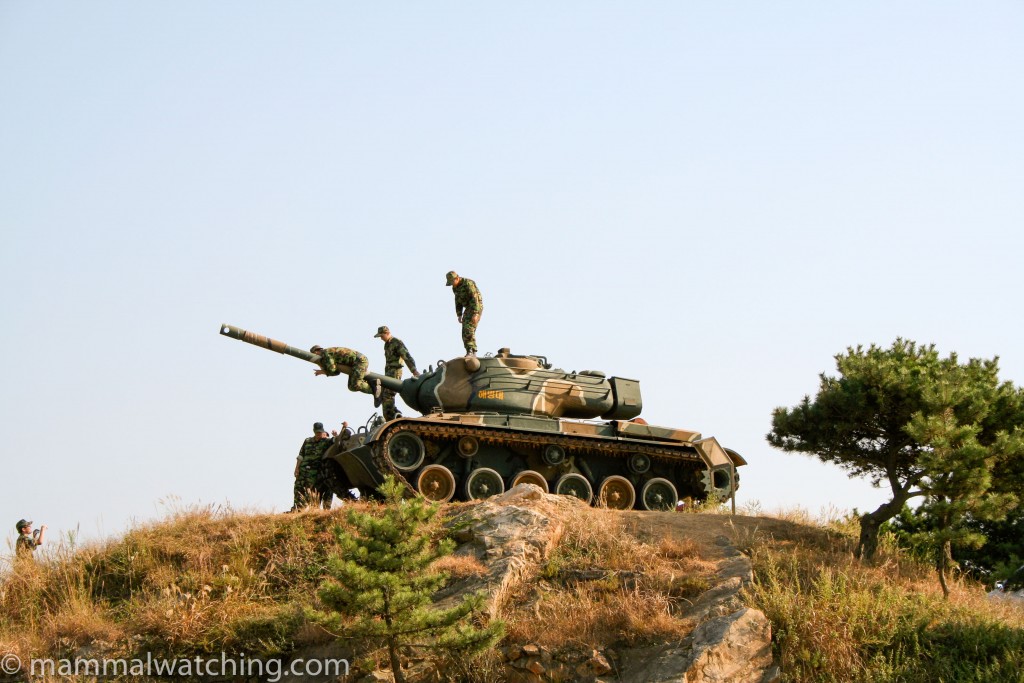
This tank exhibit on Baeng Ryong Do island was pointing straight at North Korea.
I took a package tour overnight to the island that included meals, a night in a comfortable but basic hotel and a bus trip around some of the sites. This full on Korean package tour was an experience in itself.
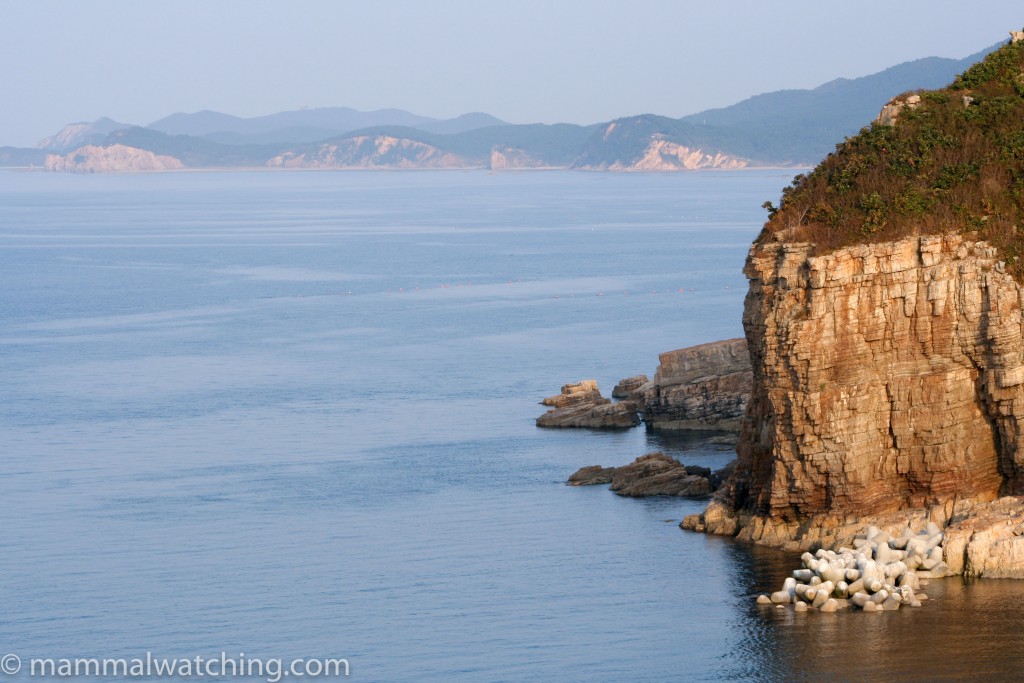
Baeng Ryong Do
The Largha Seals begin to arrive on the island in March and leave by late October. Numbers peak in August. I saw animals at several points around the coast during the weekend, though the major congregations occur around rocks off the north-east, north-west and south-east corners of the island.
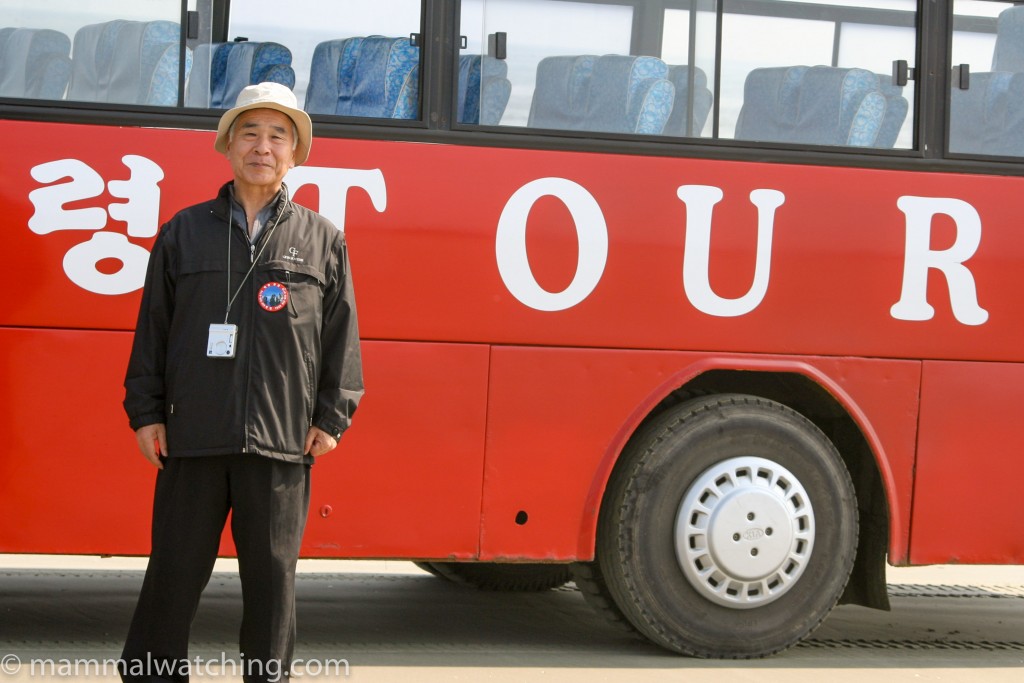
Mr Kim, my Goodwill Guide
All the bus tours stop at the Shrine of Simcheon, which was our first stop after lunch. By happy coincidence I bumped into the Korean Cetacean Research Institute there. They were out on a field trip and had a scope set up to watch a few seals hauled out on the rocks – the Mulbeom Bawi (seal rocks) – that are off the north east coast. I saw a couple of other lone animals in the water off of the “airport” beach (the sand here served as a runway) and at the “window rock”. Seals also haul out off the south-east coast on the Youn-bong Rocks but I didn’t visit there.
The best views I had were of 20 or so animals in the water by the Dumu-Gin Rocks off the north west coast, past which all the tours take a boat trip.
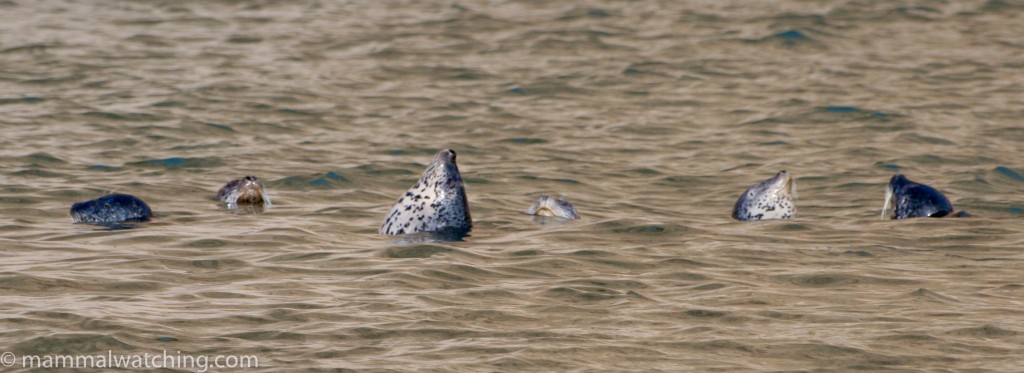
Largha (Spotted) Seals, Phoca largha
I’d been told beforehand that I could hire a small boat to take a personal tour of the seals here. But when I arrived I found out that the “small boat” was in fact a 50 seater fishing boat and would cost about $100 an hour to charter. So I stuck with the program. The cruise boat slowed momentarily as we passed the seals at my request, but in any event the seals were skittish and I am not sure how much closer we could have got. I was also told that they spend most of their time in the water during September unless the weather is exceptionally warm.
It could – in theory – be just possible to see the seals in a day trip. You’d have to get the first ferry over, take a taxi straight to the Shrine of Simcheon with a scope, spend 10 minutes watching the animals then head back for the last boat that day for Incheon.
Seoul and Daejon
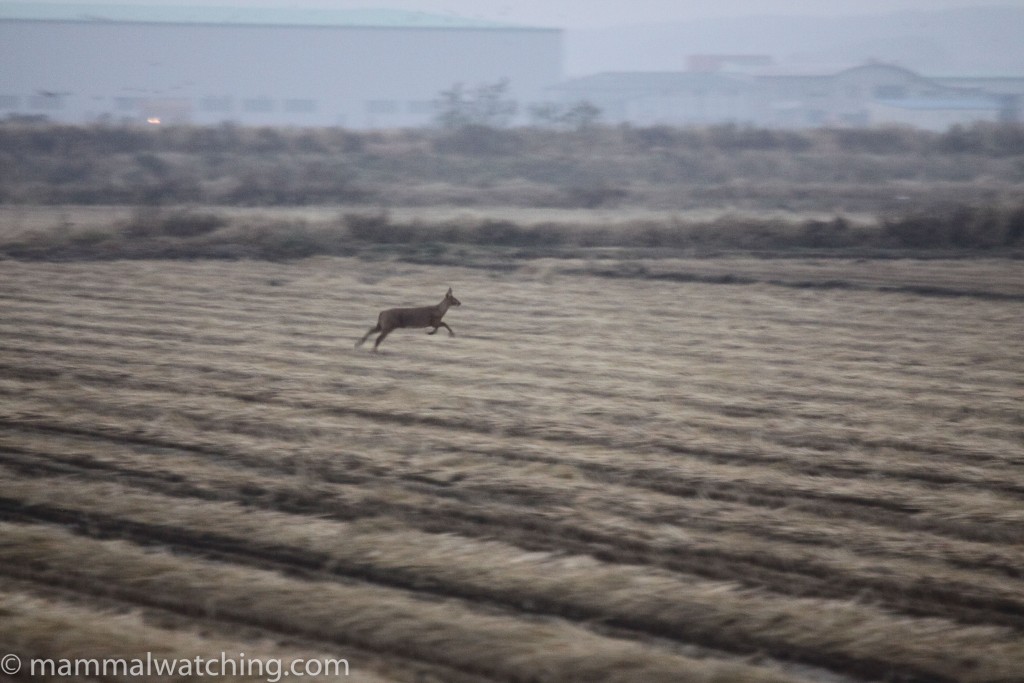
Water Deer, Hydropotes inermis, Seosan Lakes
In February 2007 I went back to Korea and met up again with my Mr Kim, my Goodwill Guide from 2006. He offered to help me visit Seosan Lakes and Daejon (which Steve Karsen had recommended – see below). I returned to Seosan in October 2009, for a day with the immensely hospitable Rich Lindie and Hayley Wood. They were fabulous at finding the mammals there.
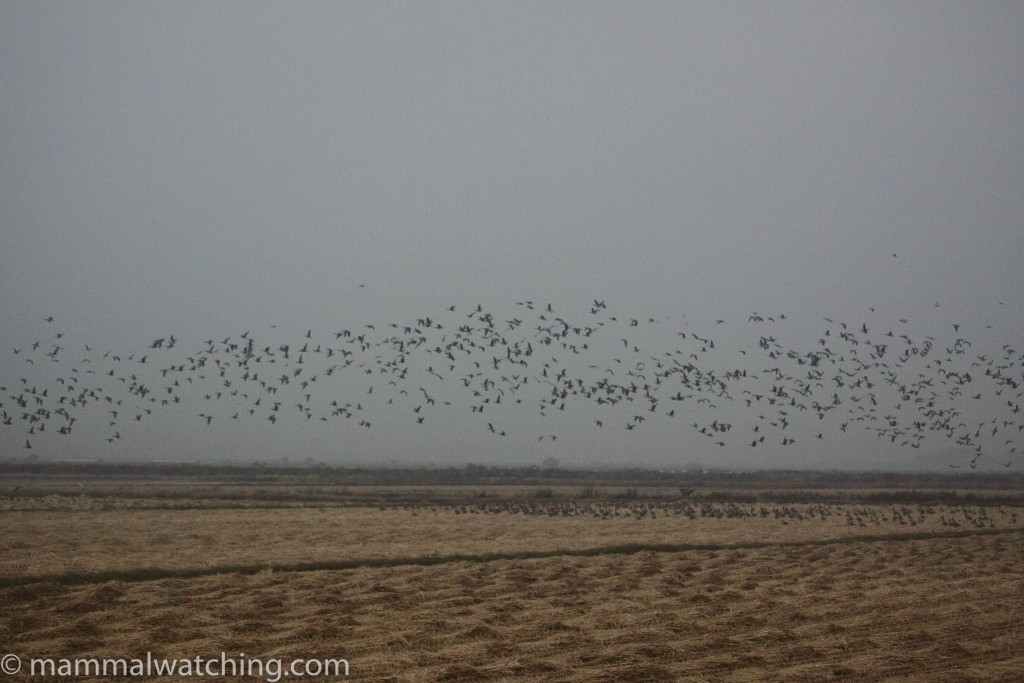
Seosan Lakes area
Seosan Lakes
In February 2007 I spent two hours spotlighting at Seosan Lakes (a couple of hours drive west of Seoul) and saw four Water Deer and three pairs of Racoon Dogs. The latter were quite intolerant of the spotlight and I got a half decent view only of the last pair. The first two pairs were just red dots moving around a paddock 300 metres away: they have an annoying habit of something similar to teleportation, disappearing from the spotlight beam in an apparently open field and cropping up again several hundred metres away.
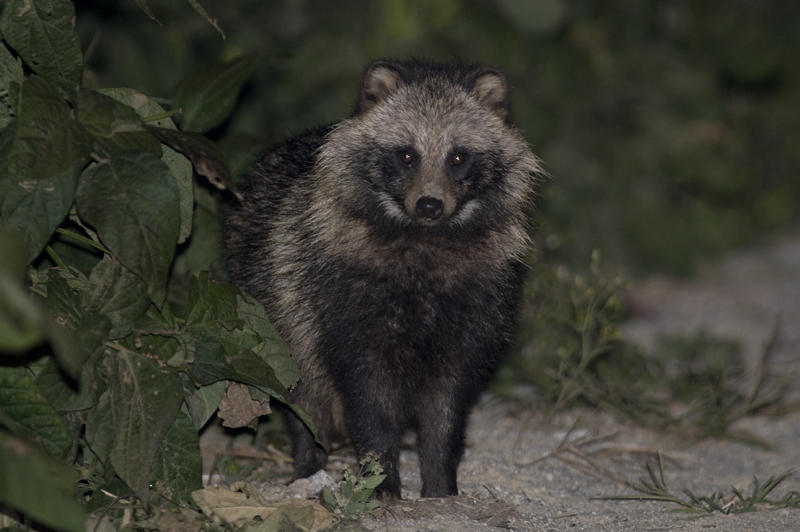
Raccoon Dog, Nyctereutes procyonoide (photo Rich Lindie)
The network of fields that lie next to the main highway from Seoul are the place to find stuff and there are a network of 2wd-navigable dirt roads leading around and through the fields. One of the locals, who the people running the cafe introduced to us, came along to direct us. But he wasn’t really needed. He claimed that Siberian Weasels were seen quite often in the area, as Rich Lindie confirmed.
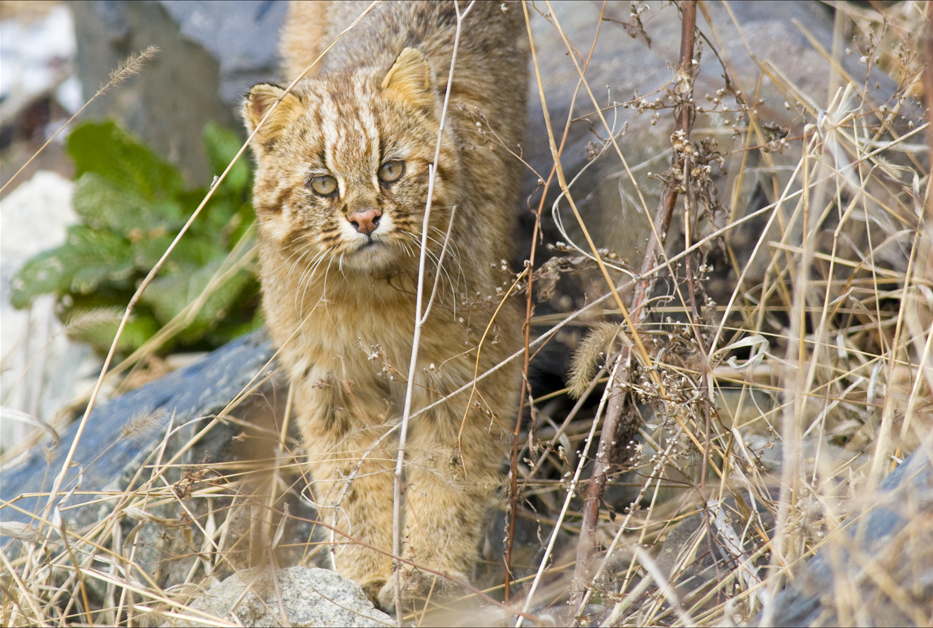
Amur Leopard Cat, Prionailurus bengalensis euptilurus (photo Rich Lindie)
When I returned in October 2009, Rich Lindie – despite torrential rain – found me a dozen Raccoon Dogs and a couple of Amur Leopard Cats in their favourite area. We found a few Water Deer too. The Amur Leopard Cats don’t look much like the regular Leopard Cats as you can see in Rich’s photo. It is a great shame that the area is being developed so heavily.
Shikchang Mountain, Daejon
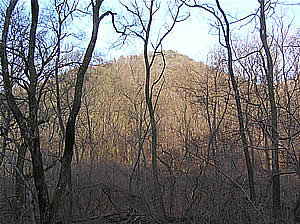
Shikchang Shan Mountain
Shikchang Shan Mountain is a 15 minute cab ride east of Daejeon. I first visited in February 2007 and spent a couple of hours walking along a streamside track by day and night. I saw no mammals in the afternoon, but in the evening saw at least 5 Water Deer and 2 Korean Hares in woods on the mountain (contact Steve Karsen for more information on the precise location). But I didn’t see any Raccoon Dogs, which are reportedly common in the area, nor an Amur Hedgehog.
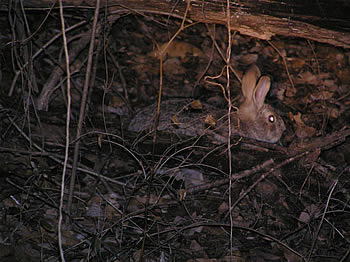
Korean Hare, Lepus coreanus
I was back in Daejeon is October 2007 and returned to the same area. I couldn’t find any deer or hares but as I was walking back down the hill at night I watch a large mustelid emerge from the streamside vegetation. Oblivious to my spotlight it walked to within a few metres of me and climbed a tree, moved along a branch and disappeared into the canopy. I was so suprised that neither my mind nor my camera registered the details. It didn’t have much in the way of distinguishing features. For a long time the arboreal behaviour led to me believe it was either a Japanese Marten, apparently very rare in Korea and it didn’t look much like one, or a Sable (never recorded in South Korea though they are in the North). But in 2010 I learned that Siberian Weasels can climb well (compared to most weasels) and so I am satisfied that it must have been this species, especially as it looked like one, and that they are quite common in the area. Mystery solved.
Namhae Island
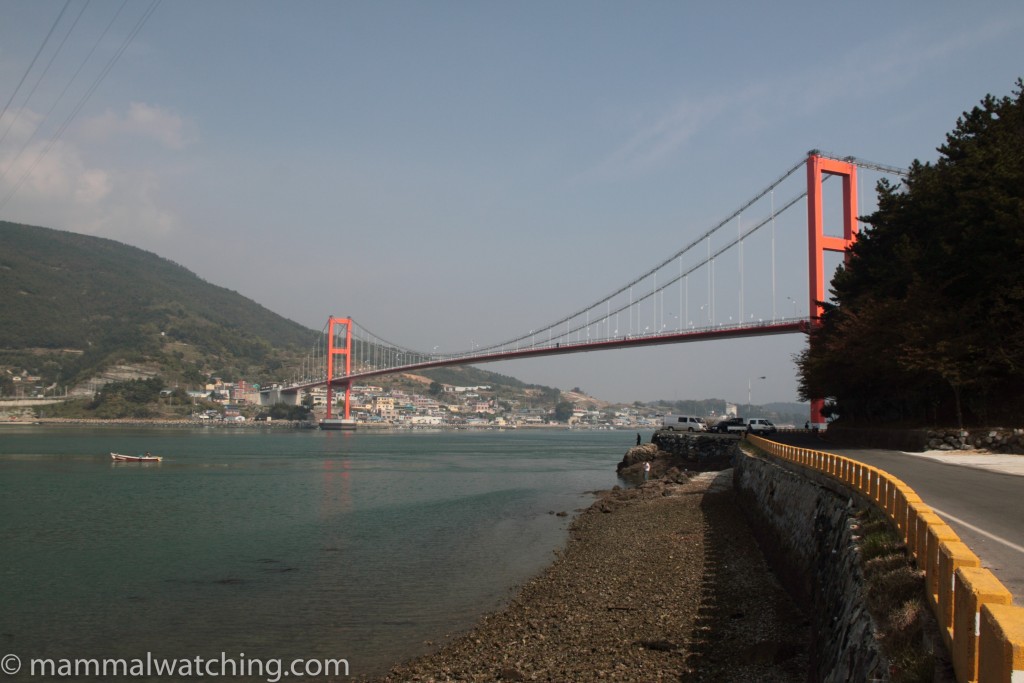
Namhae Grand Bridge
Namhae Island, about 2 hours from Seoul, is home to resident East Asian Finless Porpoises. The Namhae Grand Bridge is a great spot to look for these animals which are usually difficult to get good views of. Rich Lindie, who was good enough to take me out for the day in October 2009, had never missed them here. He spotted one 5 minutes after I arrived and we had excellent views of it as it passed under the bridge.
To get closer than we did you can cross the bridge to the island and make your way down to the area around the base of the bridge and to the west. If you want to go by car you need to cross the bridge and come back around the hill to make a full circle.
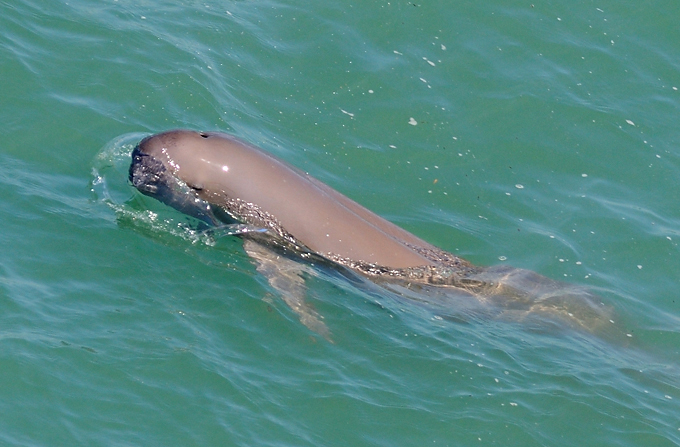
East Asian Finless Porpoise, Neophocaena sunameri (photo Rich Lindie)
Other Mammals
From talking to people it seems that some other good areas for mammal watching include the DMZ (the demilitarized zone between South and North Korea). It is empty of people and rich in wildlife as well as the occasional landmine. I know it is possible to visit there on a tour but that that is strictly controlled and suspect it would be very hard to rock up for a hike. Mount Odae, nearer to Seoul also sounds like it might have a few animals living on and around it, and you can visit there without getting shot.
The guys from the Cetacean Institute told me that Finless Porpoises are the most common cetacean in Korean waters and quite abundant, especially in the south.
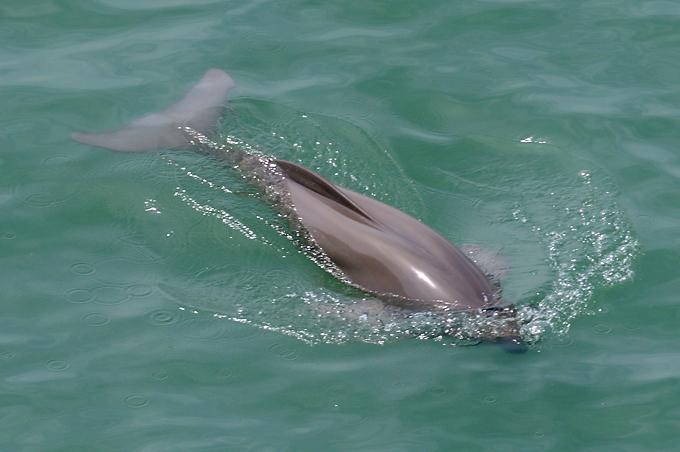
Indo-Pacific Finless Porpoise, Neophocaena phocaenoides (photo Rich Lindie)
In late 2006, soon after I had added my first Korea trip report to this site, I was contacted by Steve Karsen, an American naturalist who had spent many years in Korea. He gave me advice on some good sites near Seoul which I followed up on when I returned. He Steve was spot on. I repeat some of his advice verbatim below and he is happy for people to email him direct.
According to Steve, Raccoon Dogs, Weasels, Hares and Water Deer almost always live in the same habitats i.e. open woods, woods along streams, marshy grassland/ricefield ecotone etc. If you have a reasonable choice I’d search hardwood areas since it seems to be harder (in my experience anyway) to find mammals in extensive Korean Red Pine woods. Maybe it’s because they are sometimes rather dry. Anyway I’ve seen much less “sign” and mammals in pines. Woods that are somewhat scrubby make better Hare habitat. I suggest that you check out habitats during the day and search with a spotlight at night. You could find these species around Seoul, but it might be a hassle because of the heavily urban setting: Pukansan National Park is there but tends to be very heavily used (although I’m certain that all four species are there). It could be hard to get in there at night-some national parks are more picky than others about their closing times. There are very definitely wilder mountainous areas east of Seoul but I’ve never been there so couldn’t recommend anywhere specific…
Community Reports
South Korea, 2019: Vladimir Dinets, 11 days (over 2 trips) with some nice mammals including Amur Leopard Cat, Siberian Musk Deer and Long-tailed Goral.
Taiwan, Korea and Japan, 2016: Dominque Brugiere, 5 weeks and lots of great mammals including – in Taiwan – Taiwan Serow, Siberian Weasel and Chinese Ferret Badger; in Korea – Finless Porpoise; in Japan – Japanese Badger, Japanese Marten, Amami Rabbit, Largha Seal and Japanese Weasels.
Korea and Japan, 2015: Romain Bocquier, 7 weeks & 17 species including, in Japan, Japanese Giant Flying Squirrel, Birdlike Noctule, Japanese Serow and Asiatic Black Bear in Japan, and, in Korea, Finless Porpoise.
Also See
Siberian Weasel in Changwon (April 2011)


Leave a Reply
You must be logged in to post a comment.